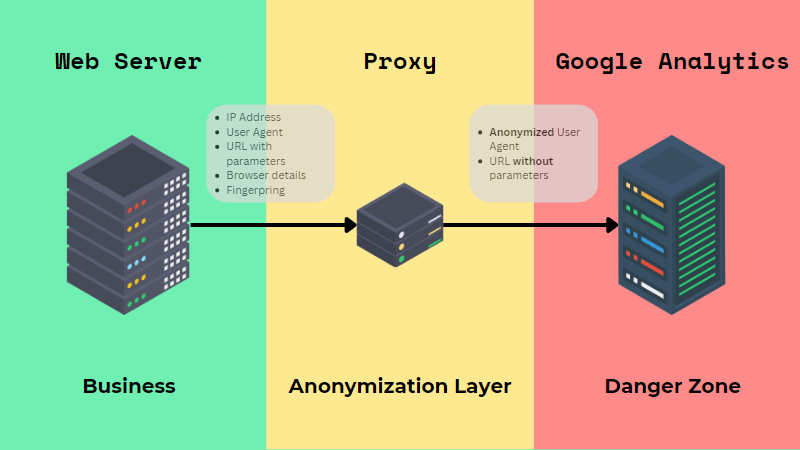Grasping the Art of Overcoming Information Collection Limitations in Google Analytics for Better Decision-Making
In the world of electronic analytics, the ability to essence significant insights from data is critical for educated decision-making. By using calculated methods and innovative techniques, organizations can boost their data high quality, unlock concealed insights, and lead the method for more educated and reliable choices.
Information Top Quality Assessment
Examining the top quality of data within Google Analytics is an essential step in making certain the integrity and precision of understandings originated from the collected information. Information top quality analysis involves evaluating different aspects such as precision, completeness, consistency, and timeliness of the information. One key element to think about is data accuracy, which describes how well the data shows truth values of the metrics being determined. Inaccurate information can bring about faulty verdicts and misguided business choices.
Completeness of information is one more vital consider assessing information quality. It entails making sure that all needed information factors are collected and that there are no gaps in the info. Incomplete information can alter analysis results and impede the capacity to obtain an extensive sight of user habits or internet site efficiency. Consistency checks are additionally important in information top quality analysis to recognize any disparities or abnormalities within the data set. Timeliness is just as vital, as outdated data may no longer matter for decision-making procedures. By prioritizing information top quality evaluation in Google Analytics, services can improve the dependability of their analytics records and make even more informed choices based on accurate insights.
Advanced Monitoring Methods
Making use of advanced tracking methods in Google Analytics can substantially improve the deepness and granularity of information accumulated for more thorough analysis and understandings. One such strategy is occasion tracking, which permits for the surveillance of details interactions on an internet site, like clicks on buttons, downloads of files, or video clip sights. By applying event tracking, services can gain a deeper understanding of user habits and engagement with their on the internet content.
Furthermore, custom dimensions and metrics provide a method to customize Google Analytics to specific service requirements. Custom-made dimensions enable the development of new data factors, such as user duties or consumer segments, while personalized metrics make it possible for the tracking of distinct performance indications, like income per user or typical order worth.
In addition, the application of Google Tag Manager can enhance the application of monitoring codes and tags across a web site, making it simpler to take care of and deploy advanced tracking arrangements. By utilizing these innovative monitoring methods, organizations can open beneficial insights and enhance their on-line approaches for better decision-making.
Custom Measurement Implementation
To improve the deepness of information gathered in Google Analytics beyond innovative monitoring techniques like occasion tracking, services can implement personalized dimensions for more navigate to this website tailored understandings. Personalized dimensions permit companies to define and gather specific information points that relate to their special objectives and purposes (What Data Does Google Analytics Prohibit Collecting?). By designating custom-made measurements to different components on a web site, such as individual communications, demographics, or session details, organizations can obtain an extra granular understanding of exactly how individuals involve with their online homes

Acknowledgment Modeling Strategies
By employing the appropriate attribution design, services can precisely attribute conversions to the appropriate touchpoints along the client trip. One common attribution design is the Last Interaction design, which offers credit scores for a conversion to the last touchpoint a customer interacted with before converting.

Information Sampling Evasion
When managing huge volumes of data in Google Analytics, conquering data tasting is vital to make certain about his precise insights are acquired for notified decision-making. Data tasting occurs when Google Analytics approximates patterns in data as opposed to evaluating the full dataset, possibly resulting in skewed results. To avoid data tasting, one reliable method is to lower the day variety being assessed. By concentrating on much shorter period, the likelihood of encountering tested data reductions, supplying a more precise depiction of user habits. Additionally, utilizing Google Analytics 360, the premium version of the platform, can help mitigate sampling as it permits for greater information thresholds prior to tasting starts. Executing filters to limit the information being examined can also help in avoiding tasting problems. By taking these positive steps to minimize information tasting, services can draw out a lot more precise understandings from Google Analytics, resulting in far better decision-making and improved overall efficiency.
Verdict
To conclude, understanding the art of getting over data collection restrictions in Google Analytics is important for making notified choices. By carrying out a comprehensive information high quality analysis, carrying out sophisticated monitoring methods, making use of customized measurements, employing attribution modeling approaches, and preventing data sampling, companies can make certain that they have dependable and precise data to base their decisions on. This will eventually cause extra efficient approaches and better outcomes for the company.
